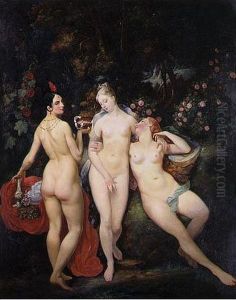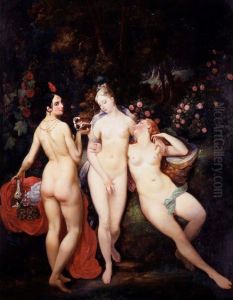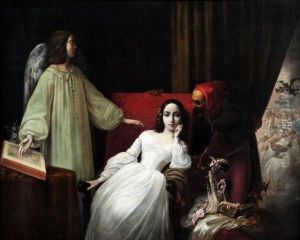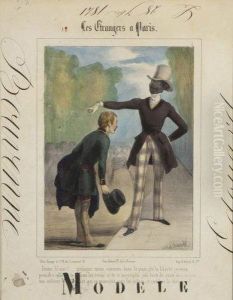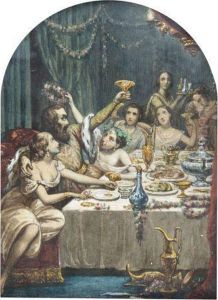Jules Joseph Bourdet Paintings
Jules Joseph Bourdet was a French painter and illustrator born on April 22, 1883, in the town of Saint-Dié in the Vosges department of France. His artistic talent became evident at an early age, and he went on to study at the École des Beaux-Arts in Paris. Bourdet's work is often associated with the Art Nouveau movement, which was prominent at the turn of the 20th century and is characterized by its use of flowing lines and organic forms.
Bourdet’s illustrations and paintings typically featured landscapes, portraits, and genre scenes. He was particularly known for his delicate watercolors and his ability to capture the nuances of light and atmosphere. His style was influenced by the Impressionist movement, but he managed to create a distinct visual language by combining impressionistic sensibilities with the decorative lines of Art Nouveau.
Throughout his career, Bourdet contributed to various publications, providing illustrations for magazines and books. He worked for periodicals such as 'La Vie Parisienne' and 'Le Rire', which were popular during the Belle Époque in France. His illustrations were not only appreciated in his native country but also gained recognition abroad. Bourdet’s work has been featured in exhibitions, and his illustrations remain collectible items for those interested in the art of illustration and the Art Nouveau period.
Jules Joseph Bourdet's career was tragically cut short when he passed away at the age of 54 on October 24, 1937. Despite his relatively brief life, his contribution to French art and illustration has left a lasting impact. Today, his work is preserved in various institutions and continues to be admired by art enthusiasts and collectors around the world.
